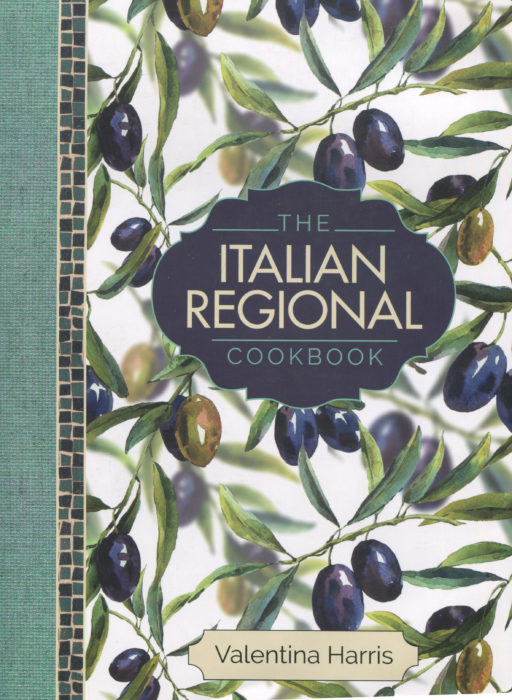
In a word, The Italian Regional Cookbook is monumental. Simply and perfectly monumental.
The most popular cuisine in America, if not the world? Italian, of course. And that’s before you count in the pizza places that you can find everywhere. We all love Italian cuisine.
So much so that we have become totally familiar with it. We are all, more or less, Italian culinary experts. We’ve had that Mac ‘n’ Cheese, Spaghetti with Meatballs, and pizzas adorned with smoked salmon. We’re rather sophisticated in our comprehension.
Oh, golly, maybe not. In Italy, Italians don’t eat spaghetti and meatballs — that an Italian-American affectation. And if you dared to put smoked salmon on pizza in Naples, the Pizza Police would come, tear up your passport, and dump you across the French border. No, certain things must not be done.
And certain things should be done, as they have for centuries. Who is the best expert writing in English to decipher the rules, the histories, and those flavors? Valentina Harris was born in Italy but has lived for four decades in London. There she has taught, been on radio and TV, and, yes, authored over 30 cookbooks.
I’ve tasted her food and reviewed her books before, like Risotto! Risotto! which has just been reprinted and is the definitive guide to that treasured Northern Italian dish.
Yes, Northern Italy provides many culinary treasures, and quite distinctive from, say, Sicily. To cover the full range of culinary history and ideas, this grand book, Valentina divides Italy into five major regions:
- North-West
- North-East
- Tuscany, Umbra and Le Marche
- Central Italy and Sardinia
- Sicily and Southern Italy
The 325 recipes in the book span all the places you know and many you don’t. There are over 1500 color photographs showing both the final dish and steps along the path to perfection. It’s a dense book but one written for the normal home cook. Nothing here is “restaurant heavy.” These are recipes from Italians home and so are destined for yours, too.
Besides the food, Valentina dwells on the geography. After all, terroir affects more than just grapes. And she talks about history. There is also the terroir of the people generated by centuries of history, many of them not easy or peaceful.
You may think of Italy as a rich nation: cars, fashion, wine. But the truth is, Italy is highly regionalized with much of the South remains poor. Even more important, over time there has been an imposing lack of roads connecting the different areas of this very mountainous nation. Over 40% of the nation is mountains where you can hike or climb, but not farm.
Isolated areas in the nation have, over the centuries, created regional cuisines based on local ingredients only. That rice in the north, capers in Sicily, rocket arugula in Puglia. To keep from being bored, mothers and wives have fashioned grand feasts from small pantries, sublime dishes that delight in each mouthful. Southern dishes they don’t ever see up North and vice versa. And the same for East versus West.
There are over 600 pages in The Italian Regional Cookbook. What can I do to convince you that this monumental volume is one you want? Let me shatter your belief that you know what Italian food is. Here’s a collection of recipes in the book, organized by region from North to South. Each dish is distinguished by its combination of ingredients or a cooking technique or presentation that will just make you pause. Or, say to yourself, “They do that?”
Yes, they do. They really do. And Valentina’s most carefully researched tome her, based in part on her TV work, gives you’re the real and delicious deal.
Let’s begin.
Tuscany: Cavour Artichokes
The artichokes are cooked in butter and Parmesan. The ingenuity here is a sauce of butter, anchovies, hard-boiled eggs and parsley.
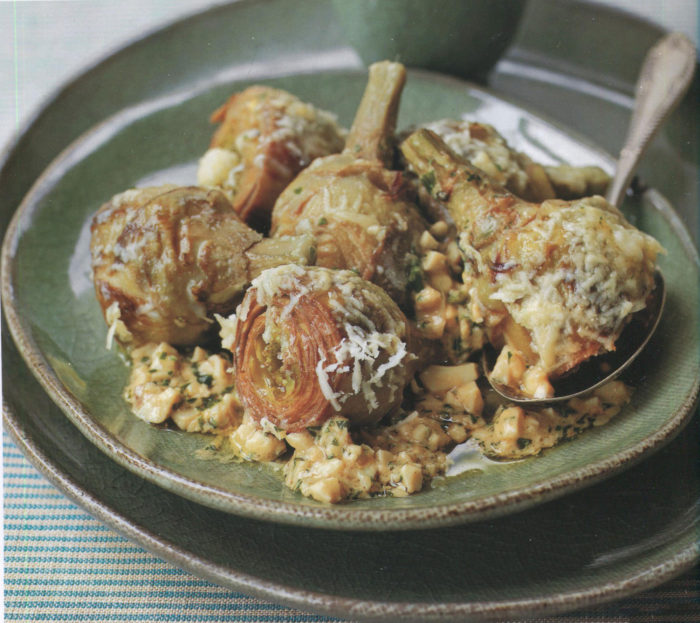
Acosta Valley: Chicken with Juniper
Whole chicken cooked in wine and stock with bacon and crushed juniper berries
Lombardy: Italian Chocolate Cake
Here it is an unusual method that gives you a distinct texture. Normally, beaten egg whites are folded into the final batter. Here, you start with those beaten egg whites and then add sugar, baking powder with cocoa and flour, then egg yolks, and finally melted chocolate. Somehow, those egg whites survive!
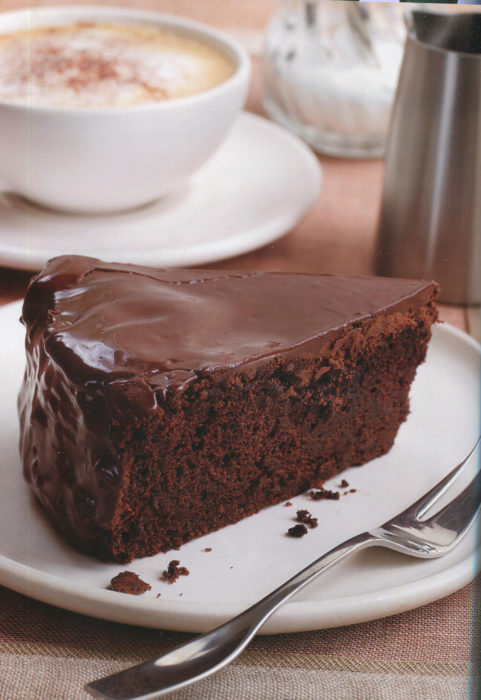
Emilia-Romagna: Lasagna in the Ferrara Style
Here the treasure is the ragu with 15 ingredients including: peas, pork loin, beef steak, prosciutto, and chicken livers.
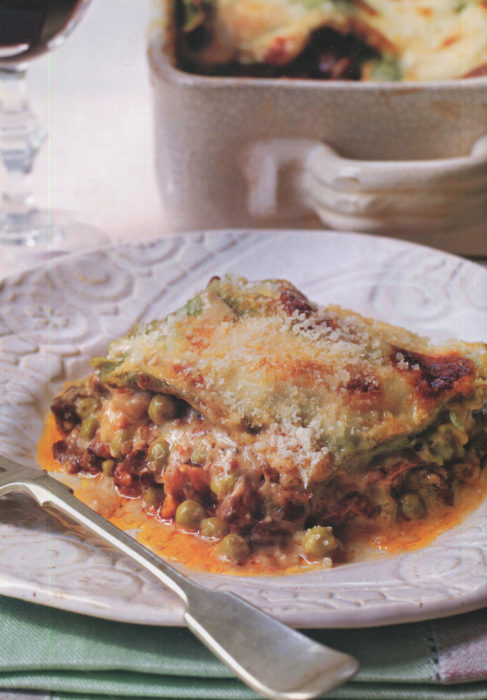
Venice: Risotto with Trout
The trout is cooked with the spices you’d expect in a Christmas cookie: cinnamon, ginger, allspice, and nutmeg.
Venice: Stuffed Duck
That stuffing wildly rich: bacon, chicken livers, crushed macaroons, and chopped candied mustard fruits [mostarda di frutta]. Yes, Italians love those chicken livers.
Venice: Stewed Button Onions
The onions are cooked in sugar and tomatoes, which is fine. Plus chocolate, bay leaves, and cloves. Chocolate and onions. How natural.
Fruili-Venezia Giulia: Stuffed Savoy Cabbage Bundles
Ah, the stuffing: ground pork, ground beef, garlic, hard-boiled eggs, brown bread, salami, onion, meat stock, and Parmesan.
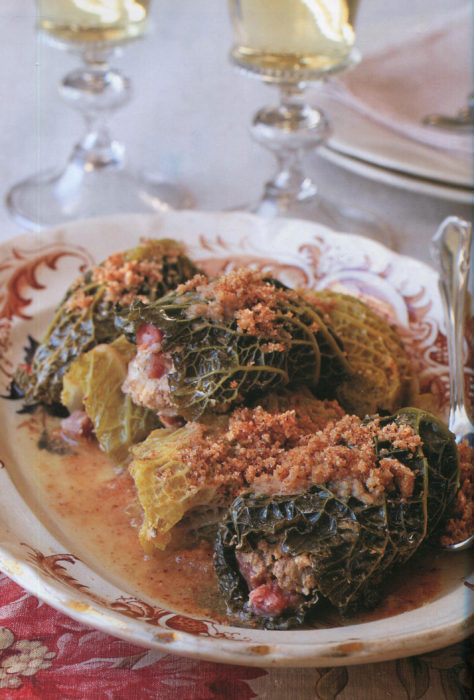
Tuscany: Honey Cookies
Rectangles made with almonds, sugar, honey, candied fruits, fennel seeds, cinnamon, nutmeg, and coriander
Umbria: Quail in the Todi Style
Quail infused with the flavors of sage, prosciutto, pancetta, olive, and capers.
Umbria: Pasta with Sweet Walnut Sauce
A dessert pasta sauced with walnuts, sugar, lemon, cinnamon, and cocoa powder. Yes, dessert.
Sardinia: Honey Fritters
Sticky and sweet ravioli fritters filled with cream cheese and dipped in honey.
Abruzzo: Pancakes in Chicken Broth
A savory specialty with the pancakes made with both flour and grated Parmesan cheese
Abruzzo: Orange Antipasto
Orange slices topped with anchovies and olive oil, a combination I would never have imagined
Sicily: Rice and Eggplant Bake
This picture says it all. You’ll need a round mold. Obviously.
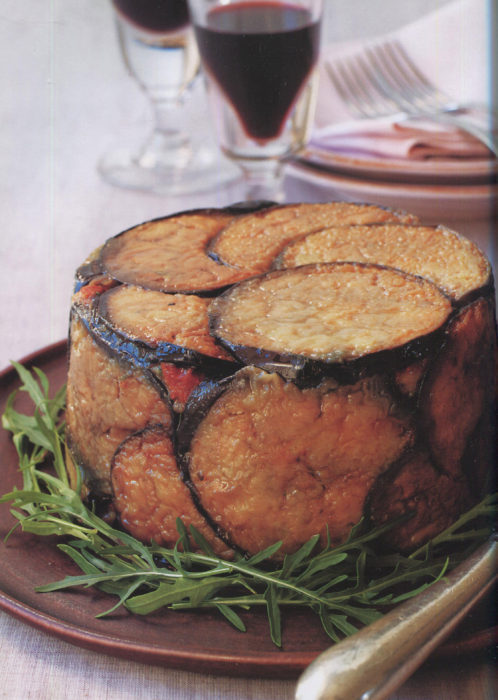
Sicily: Yellow Pumpkin with Mint and Capers
Sicily is flooded with capers and the Sicilians find ways to use them everywhere. Everywhere.
Calabria: Savory Artichoke Cake
Capers, potatoes, breadcrumbs, and cheese are added to artichokes for a cake unlike any you have had.
I doubt you have ever had any of these dishes. Surely not two. Unless your wife was born in Venice.
Appropriately, this is the longest cookbook review I have ever written. The Italian Regional Cookbook, at six pounds, is the heaviest cookbook I have ever held in my hands. Six pounds of, if not gold, then surely Italian grandeur. You’ll relish every page.
